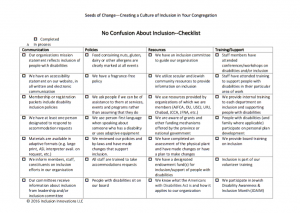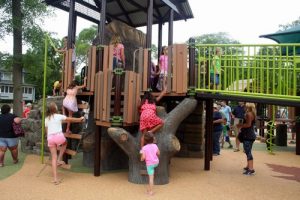A teaching in honor of Dr. Ora Horn Prouser, Executive Vice President and Academic Dean of the Academy for Jewish Religion
“Do not stand idly by while your neighbor bleeds. Do not put a stumbling block before the blind nor curse the deaf. Love your neighbors as yourself. I the Lord, your G-d am holy.” (Leviticus 19)
These verses are part of the Holiness Code, Kedoshim in Hebrew. They are in the central portion of the central book of the Torah. Right smack in the middle. And as such, they are given more weight. They beg us to behalf in a holy manner, for no other reason that G-d is holy.
Holy. Kadosh. What does that mean? It is not some kind of holier than thou, sanctimonious behavior. It is behavior that makes for an organized society. It demands that we treat others the way that we want to be treated. All people. Because all means all and we are all created in the image of the Divine, b’tzelem elohim. It sets us apart. Not from each other necessarily, but from animals, who cannot organize themselves this way.
Last Shabbat I was scheduled to lead a discussion and a walk at SEBA Park on these very verses. Unfortunately we had a thunderstorm. A big Midwestern thunderstorm. No one came. The event was part of the 613Blitz program for the Academy for Jewish Religion of which I am a proud graduate. Please consider a donation here.
https://www.crowdrise.com/donate/project/613-blitz-campaign/academy-for-jewish-religion
The Holiness Code lists many commandments that G-d commands to all the people of Israel, not just the priests, that we need to make a just society, a holy society. Some you might expect. Honor the Sabbath, Revere your mother and your father. However, it is not only a repetition of the 10 Commandments.
We went to SEBA Park in South Elgin because this portion demands that we not put a stumbling block before the blind, that we not curse the deaf. That, in fact, we are accessible and open to all. Later in Deuteronomy, we are reminded that “For the commandment which I command you this day is not too hard for you, neither is it far off. It is not in heaven so that you should say, “who shall go up (aliyah) to us in heaven and bring it to us, and enable us to hear it so that we can do it. Nor is it across the sea, that you shall say, “who shall cross over the sea for us and bring it to us and make us hear it so that we may do it. But the word is very near to you, in your mouth and in your heart that you may do it.” (Deut 30:11-14)
SEBA Park is a remarkable place, a place that I love hosting events. Nestled along the Fox River, it boasts a one-of-a-kind “universally accessible” playground:
It has a swing that a child in a wheelchair could use. Kids with balance can make it to the top of the structure. It has things to touch and feel if you are blind. It has
It is always busy. Except in a thunderstorm. The voices of children at play remind me of the Sheva Brachot, the marriage blessings that hope that we hear the voice of the bride and the groom and the voices of children at play.
Here is an article written by my friend Janelle Walker:
One of the things we would have studied is this checklist from Seeds of Change, Creating a Culture of Inclusion at Your Synagogue by Shelly Christianson. She was one of the presenters at an inclusion workshop hosted by Jewish United Fund.
 She asked what does inclusion mean to you. For me it is about living out our vision statement that includes “Embracing Diversity.” All are welcome here. With all our varying abilities and disabilities.
She asked what does inclusion mean to you. For me it is about living out our vision statement that includes “Embracing Diversity.” All are welcome here. With all our varying abilities and disabilities.
She asked: “Inclusion supports people to live the quality of Jewish life that they want to live. How is this reflected in what your congregation does now? How is it different than what your congregation does now?”
She taught: “The Mishnah in Sanhedrin (4:5) teaches: “A human being mints many coins from the same mold, and they are all identical. But the Holy One, Blessed be God, strikes us all from the mold of the first human, and each one of us is unique.” “
How does this relate to us at CKI? Recently we were awarded a grant by Jewish United Fund (JUF) to make us even more accessible. We are putting in a sensory room for kids (and adults) who need a quieter environment. With the sensory room, we have designed some programming for Chanukah, Purim and Passover. It is great that we have Heather Weiser as our educational director because with her Masters in Special Ed she really understands what is needed. We are upgrading our sound system to make it easier for people to hear. We are hopeful that there will be money do work on the women’s bathroom.
Lastly, we are actively searching for a new shtender, a Torah reading table. Currently we have one on wheels that we can wheel anywhere in the building. (Downstairs) So that anyone can have a Torah aliyah. We used it recently at a Bat Mitzvah to accommodate one of the grandfathers who is in a wheelchair and on oxygen. The Bat Mitzvah and I talked about it in advance. We did all of the Torah reading “down low” so that the Torah was accessible to all and so we didn’t call attention to the disability of her grandfather. We didn’t want him to feel embarrassed or separate. So that morning, everyone had their aliyah from the floor.
The new shtender should be wider than the current one, to make it easier for the readers and to accommodate books and papers and the Torah itself. It should be adjustable to any height…wheelchair or little kid, or one of our tall 6’4” gabbaim or me as the rabbi at 5’4”. This shtender will be dedicated in memory of Saul Mariasis, z’l, our beloved gabbai who died last July. We’ve been looking. We haven’t found it yet. It might be a drafting table or a podium of some sort. Then we will truly make the Torah accessible to all.
Much have I learned from my teachers, including Dr. Ora Horn Prouser who wrote a book, Esau’s Blessings about how the bible embraces those with special needs, and even more from our B’nei Mitzvah students like Abigail who honored her grandfather by not putting a stumbling block before anyone. May this be a Shabbat of accessibility and welcome.
